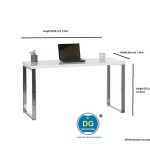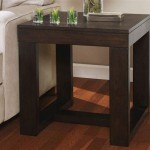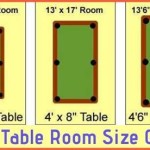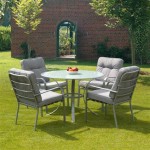```html
36 x 72 Tablecloth: A Comprehensive Guide
The 36 x 72 tablecloth is a rectangular fabric covering designed to fit tables of corresponding dimensions. This size is particularly well-suited for various table types, including standard folding tables, smaller dining tables, and buffet tables in residential and commercial settings. The popularity of the 36 x 72 tablecloth stems from its versatility and ability to provide both aesthetic appeal and practical protection to the underlying table surface.
Determining the correct tablecloth size is crucial for achieving the desired look and functionality. The 36 x 72 measurement refers to the tablecloth's dimensions in inches, with 36 inches representing the width and 72 inches representing the length. Understanding these dimensions is essential for selecting a tablecloth that properly fits the intended table and provides the desired overhang or drop.
The selection of a 36 x 72 tablecloth involves considering various factors, including material, color, pattern, and intended use. Different materials offer varying degrees of durability, stain resistance, and aesthetic appeal. The choice of color and pattern should complement the surrounding décor and contribute to the overall ambiance of the space. Furthermore, the intended use of the tablecloth, whether for everyday dining, special occasions, or outdoor events, will influence the selection of appropriate features and characteristics.
Key Point 1: Materials and Their Properties
The material of a 36 x 72 tablecloth significantly impacts its performance, appearance, and longevity. Common materials include polyester, cotton, linen, vinyl, and blends of these fibers. Each material possesses distinct properties that make it suitable for different applications.
Polyester is a synthetic fabric known for its durability, wrinkle resistance, and stain resistance. It is a popular choice for tablecloths used in high-traffic areas or for events where frequent laundering is required. Polyester tablecloths are relatively inexpensive and readily available in a wide range of colors and patterns. They are also less prone to shrinkage and fading compared to natural fibers.
Cotton is a natural fiber prized for its softness, breathability, and natural appearance. Cotton tablecloths offer a comfortable and inviting feel, making them suitable for casual dining and everyday use. However, cotton is more susceptible to wrinkles and stains than polyester, requiring more frequent ironing and stain removal. Cotton tablecloths also tend to shrink after washing, so it is essential to follow the care instructions carefully.
Linen is another natural fiber known for its elegant drape, durability, and absorbent properties. Linen tablecloths are often associated with formal dining and special occasions. They offer a sophisticated and luxurious look but require careful handling to prevent wrinkles and maintain their pristine appearance. Linen is also more expensive than cotton and polyester, reflecting its higher quality and refined aesthetic.
Vinyl tablecloths are made from a plastic material that is waterproof, stain-resistant, and easy to clean. They are an excellent choice for outdoor events, children's parties, and situations where spills are likely to occur. Vinyl tablecloths are typically less expensive than those made from fabric but may lack the aesthetic appeal of natural fibers. They are also more prone to tearing and cracking over time.
Blended fabrics, such as cotton-polyester blends, offer a combination of the desirable properties of both materials. These blends provide a balance of durability, wrinkle resistance, and softness, making them a versatile option for various uses. The specific ratio of cotton to polyester will influence the overall characteristics of the blend, with higher polyester content resulting in greater durability and wrinkle resistance.
Key Point 2: Measuring for the Ideal Drop
Determining the appropriate tablecloth drop is essential for achieving the desired aesthetic and functionality. The drop refers to the amount of fabric that hangs over the edge of the table. A longer drop creates a more formal and elegant look, while a shorter drop is more casual and practical for everyday use.
To calculate the ideal tablecloth size, first measure the length and width of the table. Then, decide on the desired drop length. A standard drop for dining tables is typically between 8 and 12 inches. For more formal occasions or buffet tables, a longer drop of 15 to 30 inches may be preferred. To calculate the required tablecloth size, add twice the desired drop length to both the table length and width.
For example, if the table measures 36 x 72 inches and a 10-inch drop is desired, the required tablecloth size would be: Width: 36 inches + (10 inches x 2) = 56 inches. Length: 72 inches + (10 inches x 2) = 92 inches. In this case, a 56 x 92-inch tablecloth would provide the desired 10-inch drop on all sides of the table. Since a 56x92 inch tablecloth isn’t a standard size, you would likely opt for a 60x102 inch tablecloth, which would provide a 12-inch drop. Conversely, a 36x72 inch tablecloth on a 36x72 inch table would provide no drop.
Consider the intended use of the tablecloth when determining the appropriate drop length. For everyday dining, a shorter drop is more practical as it minimizes the risk of tripping or snagging the fabric. For formal events or buffet tables, a longer drop creates a more visually appealing and luxurious look. Also, consider the height of chairs when deciding the length of the drop. A tablecloth that is too long can impede movement around the table.
The shape of the table also influences the calculation of the tablecloth size. For round tables, measure the diameter and add twice the desired drop length to determine the required tablecloth diameter. For square tables, measure the length of one side and add twice the desired drop length to determine the required tablecloth size.
Key Point 3: Care and Maintenance of Your Tablecloth
Proper care and maintenance are essential for prolonging the life of a 36 x 72 tablecloth and preserving its appearance. Different materials require different cleaning methods and handling techniques. Following the care instructions provided by the manufacturer is crucial for avoiding damage to the fabric.
For polyester tablecloths, machine washing in cold water and drying on a low setting is generally recommended. Avoid using bleach, as it can damage the fibers and fade the color. Ironing may not be necessary, as polyester is relatively wrinkle-resistant. If ironing is required, use a low heat setting.
Cotton tablecloths can also be machine washed, but they are more prone to shrinkage and wrinkles. Washing in cold water and drying on a low setting can help minimize shrinkage. Ironing is typically required to remove wrinkles. Use a medium heat setting and iron while the fabric is slightly damp for best results.
Linen tablecloths require more delicate care. Hand washing is preferred to avoid damaging the fibers. If machine washing is necessary, use a gentle cycle and cold water. Avoid using bleach or harsh detergents. Line drying is recommended to prevent shrinkage and wrinkles. Iron linen tablecloths while they are still damp, using a medium heat setting.
Vinyl tablecloths are easy to clean with a damp cloth. Avoid using abrasive cleaners or scouring pads, as they can scratch the surface. For stubborn stains, use a mild dish soap and water solution. Vinyl tablecloths should not be machine washed or dried, as this can damage the material.
Stain removal is an important aspect of tablecloth maintenance. Treat stains as soon as possible to prevent them from setting. Different types of stains require different removal methods. For example, grease stains can be removed with dish soap, while red wine stains can be treated with salt or club soda.
Proper storage is also essential for preventing damage to tablecloths. Store tablecloths in a cool, dry place, away from direct sunlight. Fold tablecloths carefully to minimize wrinkles. Consider using garment bags to protect tablecloths from dust and pests.
In addition to regular cleaning and maintenance, consider using a tablecloth protector to shield the tablecloth from spills and stains. Tablecloth protectors are typically made from clear plastic or vinyl and can be easily wiped clean. They are a practical option for everyday use or for events where spills are likely to occur.
Ultimately, the selection and care of a 36 x 72 tablecloth involves considering various factors, including material, size, drop length, and cleaning requirements. By understanding these factors and following the care instructions, it is possible to choose a tablecloth that meets specific needs and maintain its beauty and functionality for years to come.
```
Getuscart Ostepdecor Custom 72 X 36 Inch Clear Table Cover Protector 1 5mm Thick For Dining Room Plastic Tablecloth Cloth Pad Kitchen Wood Grain 6ft

Buy Transpa Pvc Plastic Dining Table Covers Protectors 36 X 72 Inches 1 50 Mm Thick By Qlarity At 34 Off Pepperfry

Buy Custom Table Runner Thick Fabric 36x72 With Business Logo Text Personalized Tablecloth Runners Customize For Tradeshow Vendor In

Getuscart Ostepdecor Custom 2mm Thick Clear Table Cover 72 X 36 Inch Protector For Dining Room Cloth Pad Plastic Kitchen Wooden

Buy Prozone 40x40 Inch 2 Seater Premium Striped Design Jute Table Cover Cloth For Party Kitchen Dining Feature Extra Soft And Thick Fabric Wrinkle Free Red At Best S In

Sorfey Fitted Picnic Table Cover Checd Rectangle Stretchable Tablecloth Black 36 X 72 Com

Tablecloth Size Calculator Williams Sonoma Taste

Getuscart Lovepads Upgraded Version 1 5mm Thick 36 X 72 Inches Frosted Table Cover Protector For Dining Room Plastic Tablecloth Pad Kitchen Wood Grain

Chh Buy 72in X 36in Blackjackcraps Tablecloth At Ubuy

Size Chart For Tablecloths And Table Skirting Pub Gary








